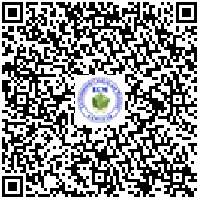Insight into MoS2 Synthesis with Biophotoelectrochemical Engineering and Applications in Levofloxacin Elimination
发表时间:2020-02-12
点击次数:
- 论文类型:
- 期刊论文
- 第一作者:
- Zeng, Libin
- 通讯作者:
- Li, XY (reprint author), Dalian Univ Technol, Sch Environm Sci & Technol, Key Lab Ind Ecol & Environm Engn MOE, State Key Lab Fine Chem, Dalian 116024, Peoples R China.; Li, XY (reprint author), Curtin Univ, Dept Chem Engn, GPO Box U1987, Perth, WA 6845, Australia.
- 合写作者:
- Li, Xinyong,Fan, Shiying,Zhang, Mingmei,Yin, Zhifan,Tade, Moses,Liu, Shaomin
- 发表时间:
- 2018-08-01
- 发表刊物:
- ACS APPLIED ENERGY MATERIALS
- 收录刊物:
- SCIE
- 文献类型:
- J
- 卷号:
- 1
- 期号:
- 8
- 页面范围:
- 3752-3762
- ISSN号:
- 2574-0962
- 关键字:
- biosynthesis; electron transfer; photomicrobial fuel cell; photoelectrocatalytic; radical groups
- 摘要:
- Biosynthesis of nanomaterials is an emerging technology in recent decades ascribed to its unique "greener" route and higher energy efficiency. It is superior to the traditional physicochemical synthesis processes, in which hazardous intermediates or high energy-consumption are often inevitable and remain a significant obstacle. In this work, a coupling system based on a photodriven microbial fuel cell (MFC) was constructed to controllably synthesize different sizes of MoS2 nanomaterials in situ. By virtue of the MFC producing electricity as a driving force, the MoS42- ions could be reduced to MoS2 nanoparticles. Impressively, photoexcited electrons produced from a polydopamine coated TiO2 nanotube (PDA/TiO2 NT) electrode under visible light irradiation (>420 nm) could also be utilized online to facilitate MoS2 nanoparticle growth effectively. Interestingly, the MoS2 material was further cultivated on a PDA/TiO2 substrate and then biologically modified MoS2/PDA/TiO2 electrodes were easily obtained, which exhibited unique hydrophilic behavior (14.74 degrees) and bioelectrocatalytic performance for effectively promoting the complete removal of antibiotics in the MFC and photoelectrocatalytic (PEC) cooperative system. Thus, we believe that such obvious advantages of the constructed photoboosted MFC system could provide an environmentally benign pathway to synthesize nanostructured electrode materials and create new opportunities for diverse pollutant removal in situ.
- 是否译文:
- 否



